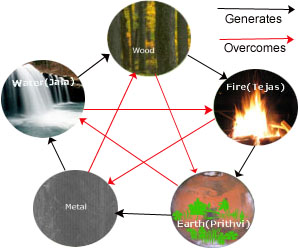|
|
Hi Guest!
Font 

 |
Home > help > OrientalMedSystem |
|
|
|
|
|
|
|
history of Oriental medicine |
|
The basics of Traditional Chinese Medicine (TCM) theory were first laid down in
print approximately 2,300 years ago in the Yellow Emperor's Classic of Internal
Medicine (Huang Di Nei Ching), after a long period of development in China. The
book has ever since been regarded as the "bible" of TOM, always studied and referenced
frequently. TCM spread throughout the region over one thousand years ago. As each
ethnic culture gained access to TCM, they adapted it to their own ways, developing
variations and specialties, and utilizing local herbs and other healing methods.
For example, from the basics of Yin-Yang, Five Elements, Eight Principles, and other
common theories, the Japanese developed an advanced system of treatment by way of
the organs in the abdomen (hara), and the Koreans developed a form of Constitutional
Therapy, whereby they classified people according to their natural-born imbalances.
Of course, now it must be called Traditional Oriental Medicine (TOM), in light of
respect for their contributions. |
|
Five Elements Of Oriental Medicine System |
| The Oriental medical system indicates that one of the five elements represents each
organ of the body.five Elements present in our environment as well as our bodies.
The five Elements are Earth, Water, Fire, Wood, and Metal and all have to be balanced
equally in order for us to experience good health. The Earth element is present
in the mind and acts as a grounding point for all experience. Our adaptability is
in the Water Element and our perception and its capacities are in the Fire Element.
Our continuous reproduction is Air and our unlimited strength is Metal. From the
mind, the physical body develops and becomes filled with these elemental characteristics;
thus forming the world’s oldest medical traditions. Today, we have a popular resurgence
in Oriental medicine, thanks to interest in Holistic medicine. The Oriental origins
date back to the seventh and eighth centuries. When all five elements are balanced,
within the body, the body is healthy and happy. In the same way as an excess of
Metal energy in your environment will depress you, an excess of Fire energy in your
body causes illness. |
 |
Chinese five elements theory refers to the five elements of wood, fire, earth, metal,
and water. This theory can be used to describe the movement and the relationship
between different elements and phenomena in nature. |
|
Basic Five Elements Characteristics & Classifications |
|
Element |
Yin/Yang Organs |
Colors |
Flavors |
Sense Organs |
Emotions
|
Body Parts |
Climate |
|
Wood |
Liver/GB |
Green |
Sour |
Eyes |
Anger |
Tendons |
Wind |
|
Fire |
Heart/SI |
Red |
Bitter |
Tongue |
Joy |
Pulse |
Heat |
|
Earth |
Spleen/Stomach |
Yellow |
Sweet |
Mouth |
Pensiveness |
Muscles |
Dampness |
|
Metal |
Lung/LI |
White |
Pungent |
Nose |
Sadness |
Skin |
Dryness |
|
Water |
Kidney/UB |
Black |
Salty |
Ears |
Fear |
Bones |
Cold |
|
|
Basic Five Elements Classifications |
 |
|
What is yin-yang |
|
All aspects of our existence can be explained and understood in terms of yin-yang
as it represents the two most general categories into which everything is divided.
As it relates to acupuncture, it is used as a means of observing the way energy
moves and manifests in the body. Symbolically viewed as polar opposites:-
Yin is dark, and Yang is bright
Yin is cold, and Yang is hot
Yin is passive, and Yang is active
Yin is female, and Yang is male
Yin is rest and Yang is activity.
The changes to yin-yang always move in relationship to each other. The ideal is
for each to exist in harmony with the other.
|
|
Yin Yang Relationships (Pathological) |
|
Yin |
Yang |
|
Chronic Conditions
|
Acute Conditions
|
|
Fatigue/Tiredness
|
Insomnia
|
|
Dampness
|
Dryness
|
|
Cold/Cool
|
Hot/Warm
|
|
Lethargic |
Restless
|
|
Underactive |
Overactive
|
|
Weak Musculature
|
Tight Musculature
|
|
Lack of Thirst |
Thirst
|
|
Pale |
Red |
|
Soft |
Hard |
|
Curled up |
Stretch Out |
|
Pale Tongue |
Red Tongue |
|
Empty Pulse |
Full Pulse
|
|
|
|
|
|
Please Rate This Page: How useful is this information for
you?
|
|
|
All material on this website is protected by International Copyright
Law © 1999-2025 by scienceoflife.com, Life Science Medical Center.
Best viewed in IE5.0+ (1024X768) resolution.
scienceoflife.com - Window To The Future of Medicine™
|
|